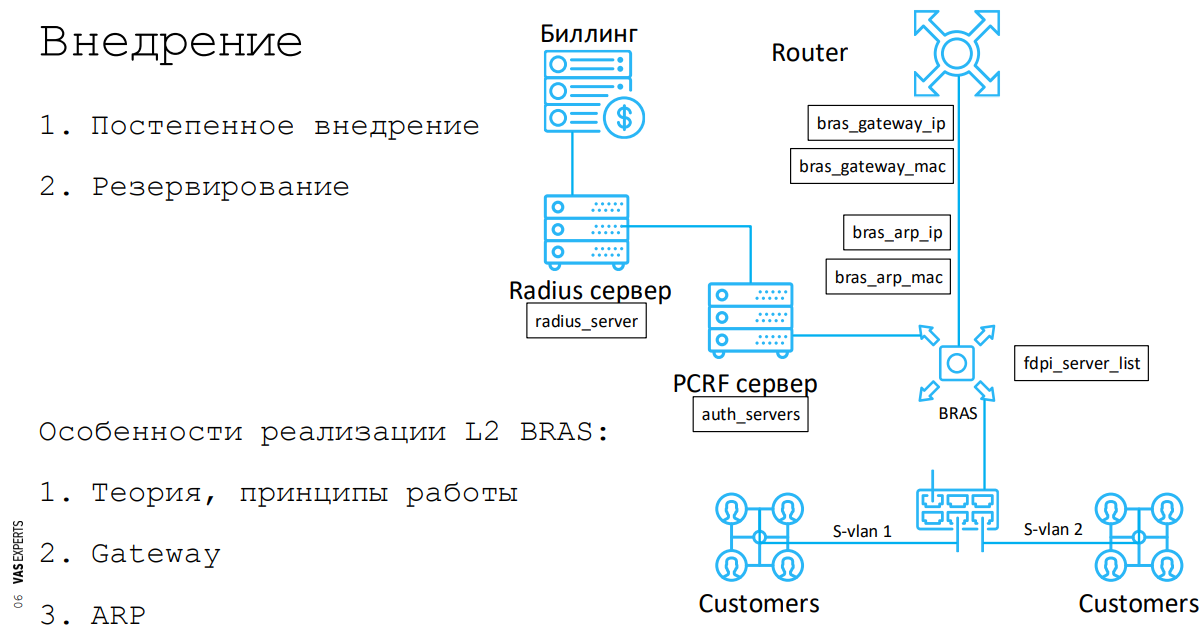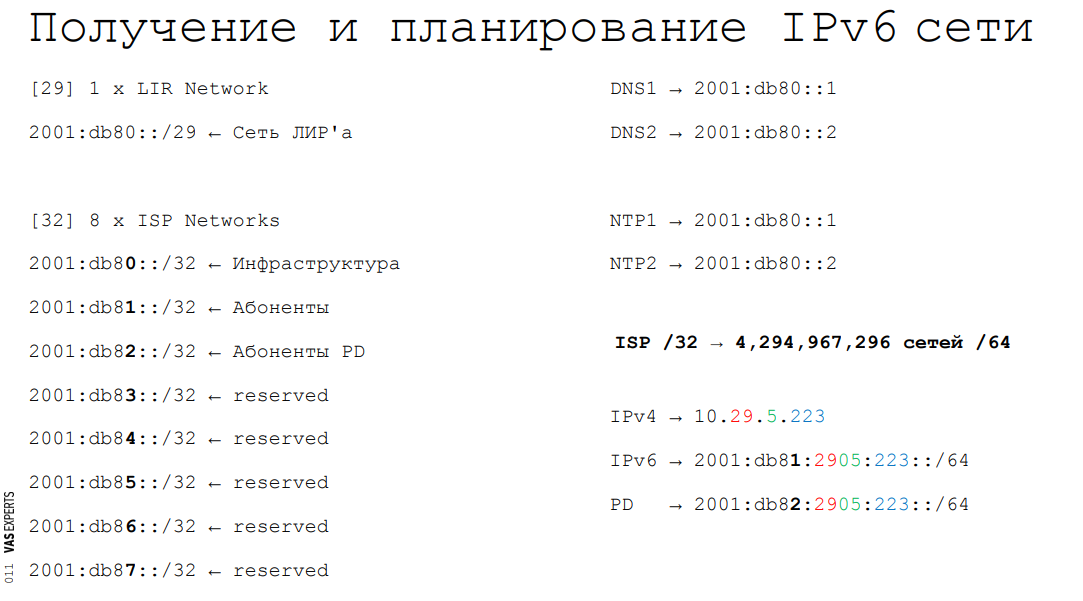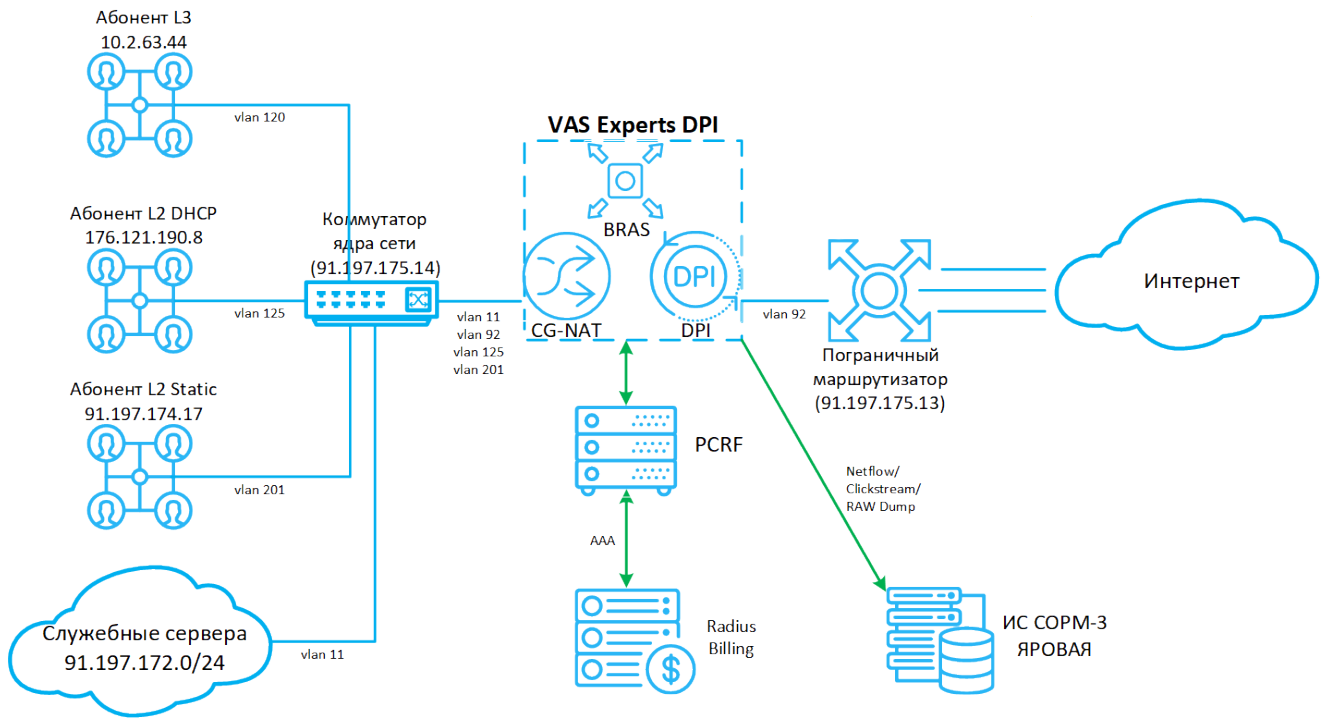Toolkit for the provider: thematic webinars about systems for working with traffic and their configuration
This is a compact selection of highly specialized webinars with specialists and partners of VAS Experts. There are reviews of past events and the announcement of the upcoming webinar .

/ Unsplash / Taylor Vick
Speaker: Roman Chuchuk, Deputy Director of X-COM Telecom. This is an internet provider in Aktau, Kazakhstan. More than thirty microdistricts of the city are connected to its network.
The company decided to implement the BRAS feature with IPv6 to simplify the management of its own network and improve the quality of customer service. For this task, they chose the SKAT system from VAS Experts. In his presentation, Roman Chuchuk shares his experience in implementing the project. The webinar can be seen as a short guide for providers when setting up BRAS.
The speaker talks about how a new feature was introduced in X-COM. The transition to BRAS was carried out smoothly - one subnet and one microdistrict at a time. Initially, the engineers deployed L3 BRAS, therefore, for terminating subscribers, I had to use Extreme switches installed at a lower level (in the network hierarchy). However, later the company switched to L2 BRAS, which is already able to work in gateway mode and process ARP requests.

/ BRAS connection diagram
In parallel with the implementation of BRAS, X-COM specialists reconfigured the IT infrastructure to work with the new generation protocol. To do this, they reconfigured BGP and DNS servers, having previously allocated the available IPv6 address space for their tasks.

/ IPv6 Address Distribution Scheme
Next, the company installed the BGPD daemon, which manages the network routing tables, and configured P2P networks to provide connectivity to uplink routers. In the case of DNS, I had to modify the configuration files for working with IPv6, set the rate-limit value and PTR records, which are used to connect the IP address of the server with its canonical name.
The novel says that in order to fully transition to IPv6, they needed to configure event monitoring through Radius . When X-COM allowed routers to send authorization requests using the new protocol, thousands of packets per second began to arrive at Radius.

/ IPv6 management menu in your account
It turned out that many routers in the subscriber network were already ready to work with IPv6. And they simultaneously demanded customization. To protect the network from uncontrolled traffic flows, engineers added a special switch in the subscriber’s personal account that had to be activated to work with the new protocol.
In total, it took about a year to implement the project, taking into account the improvements that were associated with the transition to L2 BRAS. But in the end, the company managed to reduce the number of broadcast domains, switch to IPv6 and increase network stability by prioritizing traffic.
Other topics of the webinar:
Speaker: Andrey Ermishin, engineer-architect of communications operator Etherway. This is a provider that provides home Internet, digital TV and video surveillance services in Cheboksary. More than a thousand homes are connected to his network.
Etherway has set itself the goal of implementing BRAS and SCAT from VAS Experts in order to manage subscription tariff policies. Andrei Ermishin talks about the reasons for choosing SKAT and gives schemes with network architecture before and after migration to this solution.
Earlier, the Etherway provider used the Ericsson SmartEdge SE100. But the hardware developer stopped the technical support of his system, plus the equipment itself became outdated - periodically there were breakdowns of the network cards. Therefore, the engineers of the Cheboksary provider began to look for alternatives and settled on the solution of SCAT from VAS Experts. Its connection diagram is as follows:

/ Etherway network architecture with SCAT
After implementing SCAT in Etherway, the first thing we did was set up authorization, a policy for policing and provision of services to L3 subscribers - DHCP was deployed in proxy mode. All requests that come via the DHCP protocol are relayed to Radius (which is built on Hydra). Billing itself determines: what kind of subscriber this is, what type of authorization he has, what IP address to assign to him and what services to provide.
In the case of DHCP L3, the subscriber receives an IP address from a DHCP server and through a routed network gets to SCAT in vlan92 (in the diagram above). After that, it passes authentication, authorization and accounting ( AAA ) in the billing system, and then gets to the edge of the network with subsequent access to the Internet.
With DHCP L2, the subscriber receives an IP address through SCAT DHCP Proxy and passes AAA in billing. Then it is terminated by SCAT and enters the border router. The process looks similar for subscribers with fixed IP addresses, only in this case they additionally use ARP authorization.
Other webinar topics:
Next week - September 12 - there will be another thematic webinar. It will be devoted to SORM systems. The speakers will be Olga Tyurina from IVA Technologies, a telecommunications equipment manufacturing company, and Denis Alexandrov, Head of SORM VAS Experts. At the webinar, we will discuss solutions for implementing the Spring Law, SORM-2 and SORM-3. We will talk about the “SORM as a service” model, and how it will help telecom operators reduce the cost of meeting the requirements of the law.
Participation in the webinar is free, but you need to register .
What else to read on the topic in our corporate blog:

/ Unsplash / Taylor Vick
BRAS Dual Stack implementation on X-COM network
Speaker: Roman Chuchuk, Deputy Director of X-COM Telecom. This is an internet provider in Aktau, Kazakhstan. More than thirty microdistricts of the city are connected to its network.
The company decided to implement the BRAS feature with IPv6 to simplify the management of its own network and improve the quality of customer service. For this task, they chose the SKAT system from VAS Experts. In his presentation, Roman Chuchuk shares his experience in implementing the project. The webinar can be seen as a short guide for providers when setting up BRAS.
The speaker talks about how a new feature was introduced in X-COM. The transition to BRAS was carried out smoothly - one subnet and one microdistrict at a time. Initially, the engineers deployed L3 BRAS, therefore, for terminating subscribers, I had to use Extreme switches installed at a lower level (in the network hierarchy). However, later the company switched to L2 BRAS, which is already able to work in gateway mode and process ARP requests.

/ BRAS connection diagram
In parallel with the implementation of BRAS, X-COM specialists reconfigured the IT infrastructure to work with the new generation protocol. To do this, they reconfigured BGP and DNS servers, having previously allocated the available IPv6 address space for their tasks.

/ IPv6 Address Distribution Scheme
Next, the company installed the BGPD daemon, which manages the network routing tables, and configured P2P networks to provide connectivity to uplink routers. In the case of DNS, I had to modify the configuration files for working with IPv6, set the rate-limit value and PTR records, which are used to connect the IP address of the server with its canonical name.
The novel says that in order to fully transition to IPv6, they needed to configure event monitoring through Radius . When X-COM allowed routers to send authorization requests using the new protocol, thousands of packets per second began to arrive at Radius.

/ IPv6 management menu in your account
It turned out that many routers in the subscriber network were already ready to work with IPv6. And they simultaneously demanded customization. To protect the network from uncontrolled traffic flows, engineers added a special switch in the subscriber’s personal account that had to be activated to work with the new protocol.
In total, it took about a year to implement the project, taking into account the improvements that were associated with the transition to L2 BRAS. But in the end, the company managed to reduce the number of broadcast domains, switch to IPv6 and increase network stability by prioritizing traffic.
Other topics of the webinar:
- Comparison of BRAS solutions from Ericsson, Huawei and VAS Experts;
- Detailed analysis of the SCAT DPI solution;
- Implementation of Wi-Fi Hotspot and implementation of CG-NAT;
- Connecting and configuring subscriber devices in a new network - using the most common routers as an example;
- Configure Google Global Cache and provide connectivity with the IPv6 core.
BRAS implementation on Etherway operator network with Hydra billing
Speaker: Andrey Ermishin, engineer-architect of communications operator Etherway. This is a provider that provides home Internet, digital TV and video surveillance services in Cheboksary. More than a thousand homes are connected to his network.
Etherway has set itself the goal of implementing BRAS and SCAT from VAS Experts in order to manage subscription tariff policies. Andrei Ermishin talks about the reasons for choosing SKAT and gives schemes with network architecture before and after migration to this solution.
Earlier, the Etherway provider used the Ericsson SmartEdge SE100. But the hardware developer stopped the technical support of his system, plus the equipment itself became outdated - periodically there were breakdowns of the network cards. Therefore, the engineers of the Cheboksary provider began to look for alternatives and settled on the solution of SCAT from VAS Experts. Its connection diagram is as follows:

/ Etherway network architecture with SCAT
After implementing SCAT in Etherway, the first thing we did was set up authorization, a policy for policing and provision of services to L3 subscribers - DHCP was deployed in proxy mode. All requests that come via the DHCP protocol are relayed to Radius (which is built on Hydra). Billing itself determines: what kind of subscriber this is, what type of authorization he has, what IP address to assign to him and what services to provide.
In the case of DHCP L3, the subscriber receives an IP address from a DHCP server and through a routed network gets to SCAT in vlan92 (in the diagram above). After that, it passes authentication, authorization and accounting ( AAA ) in the billing system, and then gets to the edge of the network with subsequent access to the Internet.
With DHCP L2, the subscriber receives an IP address through SCAT DHCP Proxy and passes AAA in billing. Then it is terminated by SCAT and enters the border router. The process looks similar for subscribers with fixed IP addresses, only in this case they additionally use ARP authorization.
Other webinar topics:
- DSCP tags in SCAT;
- How to allocate subnets when the client of the provider requires one MAC and several IP.
- What functionality does SKAT use by the operator and how to manage subscribers (using examples).
Upcoming webinar: SORM as a service
Next week - September 12 - there will be another thematic webinar. It will be devoted to SORM systems. The speakers will be Olga Tyurina from IVA Technologies, a telecommunications equipment manufacturing company, and Denis Alexandrov, Head of SORM VAS Experts. At the webinar, we will discuss solutions for implementing the Spring Law, SORM-2 and SORM-3. We will talk about the “SORM as a service” model, and how it will help telecom operators reduce the cost of meeting the requirements of the law.
Participation in the webinar is free, but you need to register .
What else to read on the topic in our corporate blog:
All Articles